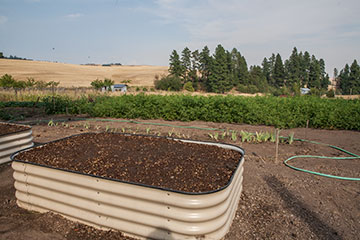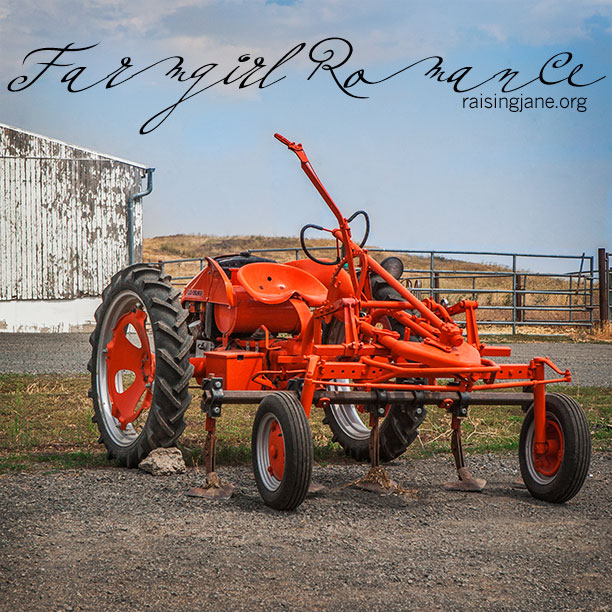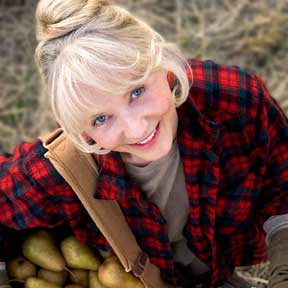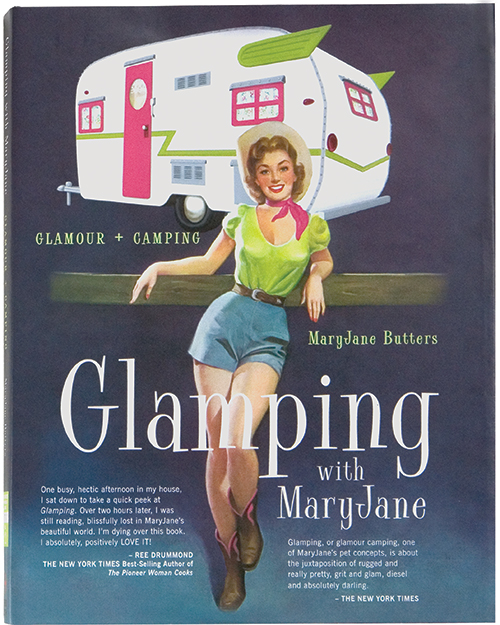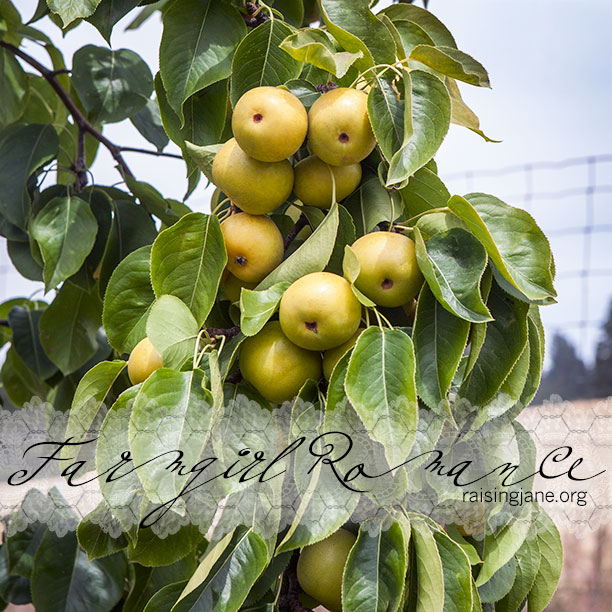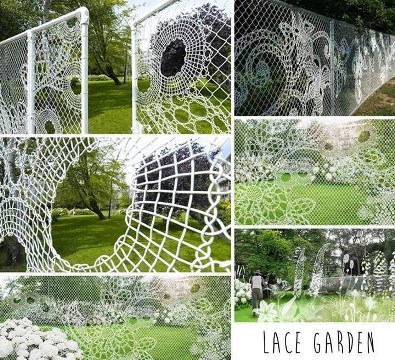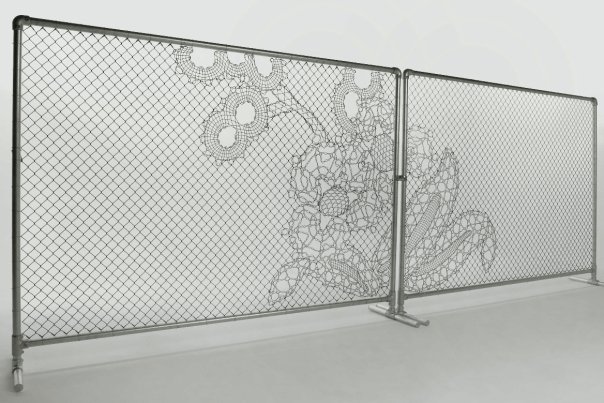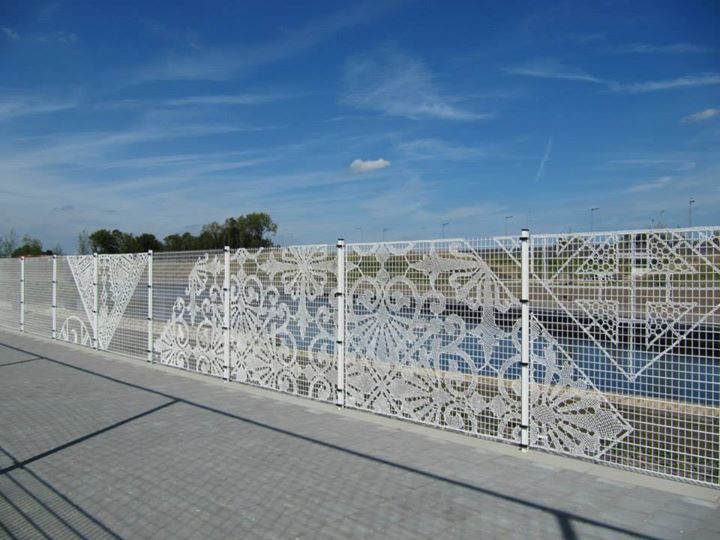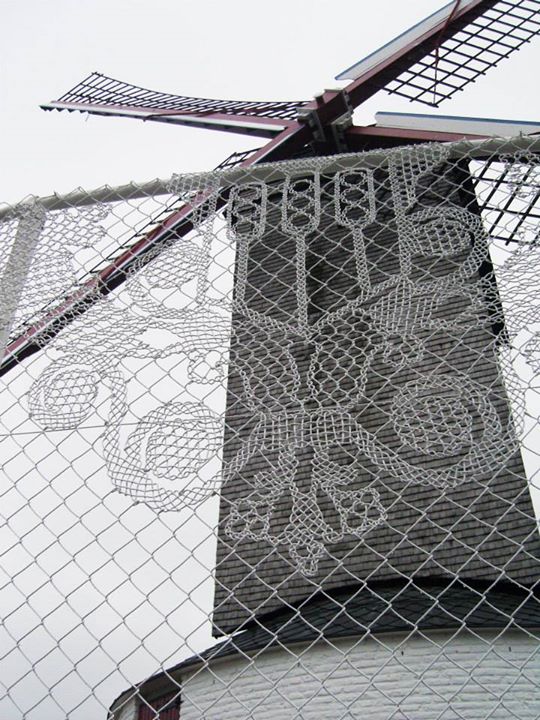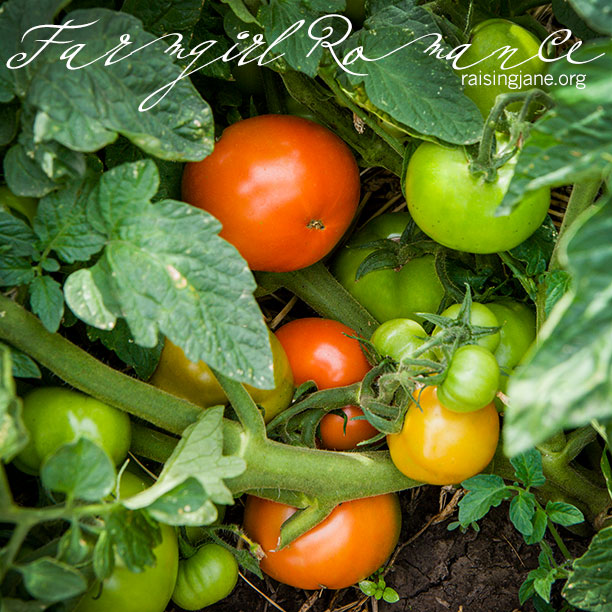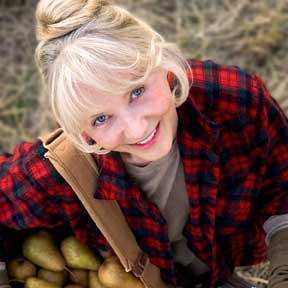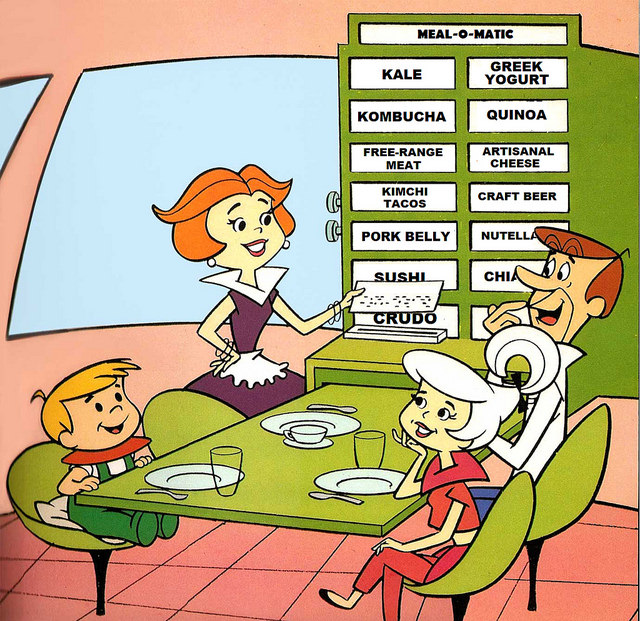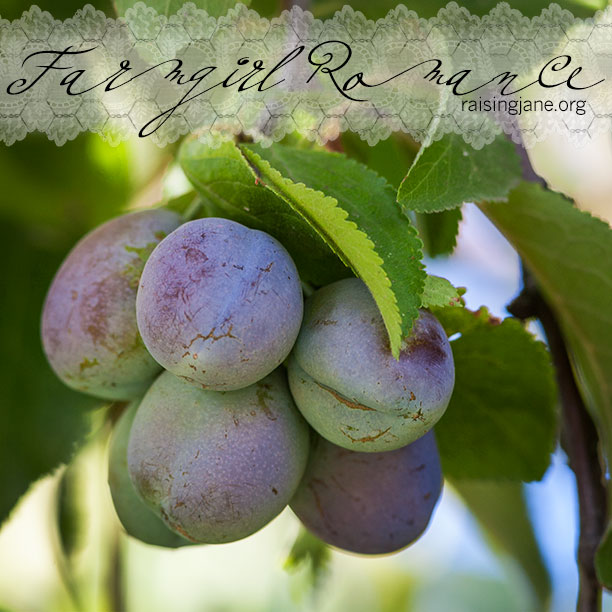This post is for Winnie, who asked recently for an update on the status of our little store that moved home to my farm.
As it turns out, there’s a lot of behind-the-scenes work we’re doing before we get to the store. The store will eventually have a new roof that includes two cute little carports on each end (farm truck in one, Shasta trailer parked in the other, fully hooked up to power/water/electric) and a rocking-chair front porch. Inside will be a community bathroom, retro kitchen, and washer/dryer for farmstay guests.
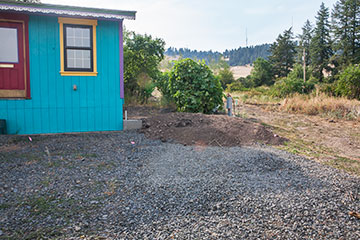
But first, what’s that peeking out from behind?
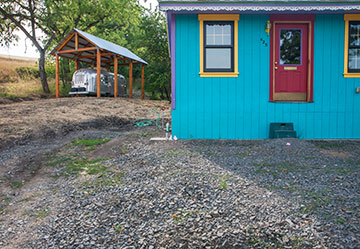
Why, it’s my Airstream! She’s found a permanent home beneath her own carport, complete with concrete pad and water/sewer/electric hookups. When I took these photos, I’d just planted a “dryland pasture grass mix,” and since then, her new yard is green and lush. Winnie, she has a very old homestead apple tree right outside her door, as well as lots of indigenous plum trees in her new yard.
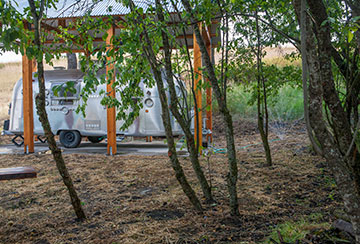
The next few pics show all the work being done to essentially take apart and naturalize what we’ve always called our “upper garden,” which is located beside the little store. We’re taking out the deer fence and removing all the black felt and netting we had throughout for weed control in our large strawberry bed and raspberry patch.
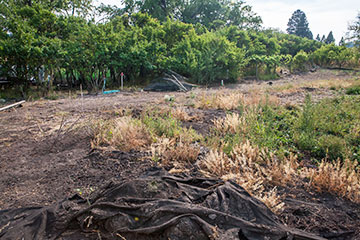
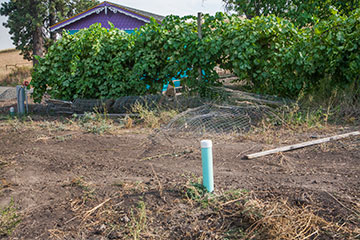
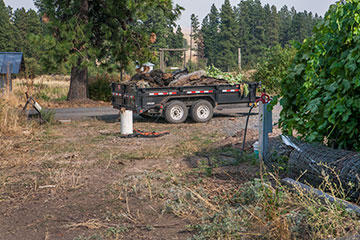
Our strawberry patch has been dramatically downsized to these two new raised beds in our “lower garden.” (The large strawberry patch was destroyed this spring when we had to reroute our sewer, water, and electrical lines.) In the distance, you can see a wall of tomatoes. We’re growing a market-garden patch of heirloom black cherry tomatoes to sell in town, and they’re just starting to come on. This whole patch was grown from seeds I saved from one little tomato I bought two summers ago. The first year, I grew a number of plants from the seeds of that one tomato, then I saved lots of seeds and offered them to my readers. I sent out around 80 envelopes full of seed.
